AuthorA 20 year old fitness enthusiast and dedicated Olympic style weightlifter. I am a Level 2 Weightlifting coach, Powerlifter, and non-competitive Irish dancer. I'm determined to live a healthier lifestyle and take care of my body whilst influencing other young people to do so. I never doubt my ability to achieve something; I just change what I'm doing until I succeed. Archives
May 2021
|
Back to Blog
Body shaming: Why do we do it?19/7/2019 About two years ago, I wrote a blog post all about body confidence. The blog post is what I wanted it to be and all, but I felt as if it would be nicer to establish why we consciously and unconsciously body shame and the general impacts of this. I thought that some ties into some other great sites would be a method of empowerment through such a deep-subject post. Here is the link to that post if you would like to read it. What is body shaming?Body shaming can involved you as an individual looking at your own body in a negative way, through comparisons to others like your friends, role models, family members and celebrities. Body shaming can also involve you or a group of people having an negative opinion about another persons body. Body shaming can be presented as conscious or unconscious. For example: Conscious body shaming: This involves the idea that shaming another persons body is noticeable, verbal and specifically targeted at an individual. This may appear as attempted humour, but can actually be classed as a form of bullying. For example, making negative comments about a persons weight loss or weight gain. Unconscious body shaming: This involves the idea that we have thoughts about body shaming ourselves or others, but these are either suppressed or not verbally spoken. For example, walking past someone and thinking that they 'don't suit the revealing clothes they are wearing' or are 'showing too much skin'. When does body shaming happen?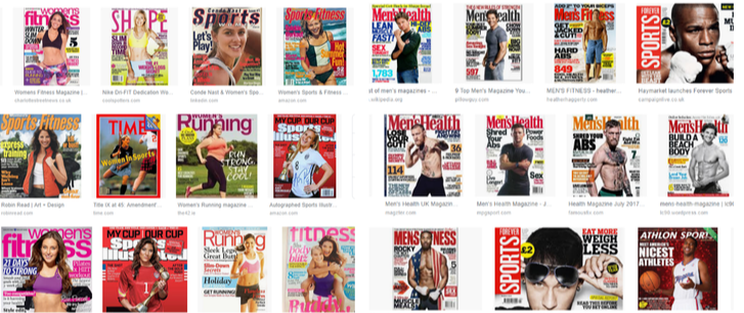 I felt that within this section I should highlight that body shaming happens everywhere. It doesn't matter what culture you are from, your gender, your economic status or your everyday environment. Particularly within this post, I am going to focus upon body shaming within the sports industry and a recent experience of mine involving body shaming. Take a look at the Women's and Men's front covers of sports magazines. Here are some of the similarities and differences that I have noticed.
Women Magazine Observations I have noticed that there are at least 4/12 of the sample of magazine covers for Women that show Women as 'long-term sportswomen' and not just 'women going to the gym as a new hobby'. These same images portrays them as a body type that isn't overly associated with being 'healthy' or shows them holding trophies achieved from their sport. Although this is a very small number, this I like! Those four images don't sexualise the nature of Women participating in sports for someone else's enjoyment. The following words were featured on the front of this small sample of the Women's Sports magazines. Fat blasters, Look hot, Look 5 years younger, Sleek sexy arms, World-Class Butt, Slim-down secrets, Diets, Super Fun Salads! Male Magazine Observations Within the Male magazine sample, it only seems to show 4/11 men within normal fitness clothes that they would wear to the gym. I don't know of many men who would go to the gym or play their sport topless? but anyways. Again, it doesn't seem to show any body types other than 'muscular types'. Sorry but since when is someone wearing sunglasses and 'looking cool' associated with sports? It is quite possible that the male sportspeople on the front of these magazines are athletes (Michael Jordan and Conor Mcgregor), but using male actors could start to put pressure upon the ideas that even actors who just 'go to the gym' have the best bodies. Therefore, this starts to build up a reputation surrounding the idea that all men must have muscular or 'fit' bodies. There are only 2/11 covers within the sample that don't have unrealistic images of men who just 'go to the gym' or 'get all the women'. Meaning these images contained athletes without their bodies being the main focus of the shot for another persons enjoyment. The following words were featured on the front of this small sample of the Men's Sports magazines. Hi-Def Abs, Strip away belly fat, Power foods for men, Big arms now, Look better instantly, Add 2" to your biceps, Get jacked, Hard abs, Build a beach body, Weigh less Eat More! The impacts of body shaming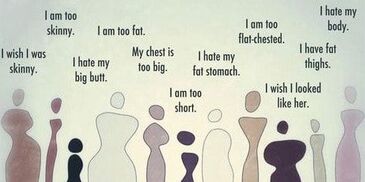 From shethepeople.tv From shethepeople.tv I figured I would observe the words surrounding the magazine covers and I can report back that at least nearly half of the Males sports magazines contained sexual references. Now, I know my target audience is pretty young for this site, but: wheres the need? Its a sports magazine and shouldn't broadcast and force such imagery surrounding the topic to both genders. Not mention that there is a lack in any form of 'young peoples sporting magazines and articles'. Do the people writing these covers even think about the low self-esteem issues it could project onto some Men. I think its pretty safe to say that both Male and Female sports magazines are just as sexualised as each other! Then, this causes those who may have different body types to the models on the cover to feel insecure. I mean, if you are not happy with your body; then do something about it! But pressurised imagery and wording from a magazine should not force an individual to change how they look, if they like their body anyways. Can you imagine how a person may feel if their physical traits that they are perfectly comfortable with are being broadcasted as 'awful' and 'avoidable' throughout the media? I mean, no wonder we all tend to jump on the bandwagon of unconsciously body shaming ourselves and others! How this should change? A women wearing a hijab was placed upon the front cover of an American Sports Magazine, 2016. A women wearing a hijab was placed upon the front cover of an American Sports Magazine, 2016. There seems to be a specific 'look' when it comes to what 'body type' is on the front cover of a magazine. Thankfully, some magazines are starting to make a breakthrough with this. Making a difference should involve the usage of body types such as using people who are not models and who are comfortable in their body or those who have just tackled major long-term fitness goals of theirs. Groups of different genders, body types, ages and cultures should be broadcasted on sports magazines just as much as any other magazine or platform. Ideally, if I was going to design my own varieties of sporting magazine covers, they would contain: Models: Young athletes, elderly athletes, athletes of all abilities, child athletes and talented people, female and male athletes who aren't half-naked on the cover together. The cover of a sporting magazine should look equal Words: Empowering words about the individuals on the cover WITHOUT comparing them to the reader, phrases that suggest there is a choice revolving around a person's body type and fitness levels, phrases that are not sexualised or aimed towards gender stereotypes. Why should this change?Obviously the images on the covers of magazines are what helps to sell the magazine, therefore what has sold before will sell again. So if the cycle slowly starts to break, it may be possible that parents will buy their children positive and uplifting magazines featuring inspiring and talented people next to normal and regular sportspeople. I mean, body shaming is happening all around us! Social media is all around us! It is not too often that I experience body shaming nowadays. I used to get slight hints towards it when I was younger. That I should be lucky that I'm so skinny, which wasn't a particular feature I desired within myself, which made me think when I was growing that I had to remain skinny. More recently, because I'm on the skinnier side of your average stocky ideal Olympic Weightlifter, I get some comments online and in person about my size. For example, 'Do you even lift' or 'Hey do you know which muscle you need to build stronger and bigger?' (No because I hadn't thought about that until you mentioned it). More recently, an adult actually asked me to flex my arms as they thought I looked 'too skinny to lift weights'. I so badly wanted to explain that Olympic Weightlifters don't have predominant biceps, I'm a small Woman so I'm not going to have massive amounts of muscle mass and that I don't take performing enhancing drugs. If there are people on PED's on the cover of magazines, then that makes everything so much worse. So is it that the media has projected these poor ideas onto us that even amateur sports players are being body shamed for not looking particularly athletic? It's not even just athletic people. If you're skinny, you should bulk up. If you're classed as overweight, you should cut down. It's becoming nasty and is effecting the younger minds of this day and age. This causes bullying and mental ill health. I mean obviously if you're in a critical health situation with your body size, then seek help by all means. If that is by fault of the media, then shame on them! I found two interesting article links about this topic. Please have a read here, I backs up many of my points made. More recently I have bought a book called 'Goodnight stories for Rebel Girls' and there is another book called 'Goodnight stories for Rebel Boys' too. These are excellent books to inspire all. I recommend them entirely. Thank you for reading this post!
0 Comments
Read More
Back to Blog
I'm back with another post! Had this one written down for around a year now. In this post I am going to explain the standard structure of an Olympic Weightlifting competition, however some of these steps may alter based upon the level of the competition (E.g. There may be drug testing procedures or a competition such as the British Championships may be more strictly structured). Entery processesSo you're looking for a competition to enter, it may be your first competition or the first one you have entered in a while. So you either enter a local friendly 'inter-club' or an 'open' competition, that won't allow you to set any records. Either that, or you enter a competition that is on British Weightlifting's website that usually requires a qualification total (depending upon the tier of the competition). Here is a link to enter these competitions, the tiers are explained on the website. ArrivalAsides from paying to enter the competition, well done: you actually showed up! Smaller competitions may ask for payment on the door or no payment at all. Larger competitions are often going to have a check in process where all lifters and coaches are registered and given an ID lanyard to wear throughout the day. Whereas, a smaller competition is more likely to check you're in attendance when you are weighed in. Weigh-In It is likely that when you entered the competition online that you had to provide a body weight category. Hopefully, you provided a realistic and achievable weight-category as if you don't fit into the category, more than likely you will be asked to lift as a guest lifter. Being a guest lifter means that you cannot place within the competition and you cannot set any records or qualify for any future competitions through the total you tried to achieve in the competition. Don't worry if you don't weigh correctly in the category by a fraction of an amount (I'm talking around about 0.1kg), the weigh-in lasts for an hour which will give you time to reweigh in and lose or put on the weight. In this the lifter must also provide their first two opening weights for the Snatch and the Clean and Jerk. The table I have made shows an example of what information will be on any projected screens before a lifter has lifted. Eat up or observe More than often, I'm in the first group on the platform because I'm either the youngest in an Under 23 years competition or the lightest as an under 49 kilogram lifter. The few times I have been in the last group on the platform are in mixed school-year and sixth form competitions. There are pretty much two choices before you have to warm-up (depending on when you're lifting). The way I view it is you either eat up (since you need some fuel before lifting or you're starving from having to ensure you are in the correct weight category) or you observe (sit back, relax and watch the first few groups). I speak from experience when I say that you must bring lots of food to a Weightlifting competition. My first competition was a small development friendly comp and I'm pretty confident that I devoured an entire tin of Foxes biscuits before lifting... Not good, but from an 8 year old's perspective, I was pretty happy. Food is almost as essential as making sure you've got the correct gear to lift in. My go to list of food to take to a competition would be:
Top tip: Drink lots of water, but don't forget to wee. You might be just about to complete your last heavy lift in a tight singlet. Put them together and you've got yourself a bad scenario... WarmupFrom my past experiences in competitions, people have entered the warm-up room 10 minutes before the last group has finished lifting. Nowadays, I'm confident that most competitions will follow a timed schedule for when each group should enter the warm-up room. It is best to have a coach or someone who is familiar with the stresses of being in the warm-up room. Hopefully, your competition will have many platforms but it is often that you will be sharing a platform anyways, increasing your likelihood of making new friends (or enemies if that's what you prefer...). Warm-up rooms (no matter the size) are going to be sweaty and cramped in certain areas (E.g. right next to the entrance to the main platform). My coach has always given me the freedom to warm myself up in a variety of ways. Previously, I would foam roll or complete exercises that involve jogging, jumping or running and then get stuck straight into warming up on the bar. But more frequently, I have found methods that suit me better. Here is my structured warm-up for most of my workouts and competitions:
Lift off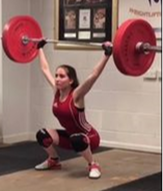 I'd like to keep this as short and simple as possible. It's lift off time! By now, your group should have been introduced to the audience. Everyone will receive six attempts (three attempts for the Snatch and three attempts for the Clean and Jerk). The lifter who is lifting the lowest amount of weight will lift first. Hopefully there will be somebody else lifting a similar weight to them, if not this lifter will continually be on the platform after themselves, but they will receive 2 minutes to recover. I'll try and explain this a bit better. Lifter A is starting on 12kg and then aims to lift 13kg for their second lift. If Lifter B is lifting 13kg, then Lifter A will receive a better recovery since Lifter B will be on the platform before Lifter A's second attempt. If a lift is failed, a lifter will receive another attempt (They can stick at the same weight they failed at or increase). If a lifter fails all three attempts within one of the lift types, they will be cancelled out of the competition and will not place. If a lift is failed, it is usually marked in red upon a spreadsheet and red lights will be shown visually by the referees. Again, if the lift is a good lift, this will show as a white light or a green marking on a spreadsheet. I'd say that it is especially important within a large competition to keep track of when you are lifting. There have been times where I have been unable to hear my name being called (due to such a busy competition) and I have been timed out for not lifting on the platform within the timed minute. Depending upon the competition type, technique points may be measured. For example, within a Youth or Development competition (School children under the age of 13). I have explained this more in depth within another blog post. Awards CeremonyIts pretty common now that if the competition isn't large or isn't going to be running for more than 8 hours, that most lifters are made to wait and watch the other lifters before receiving their awards. This is nice since it shows a bit of sportsmanship involving everyone watching and clapping for each other. Otherwise, within larger competitions, the awards ceremony for each group is done straight after the group has finished lifting. This is how your place in the competition is usually ranked:
Thank you for reading this post. I know I have written posts that are similar to this in the past, but I figured it would be nice to put all the information together.
Back to Blog
 I'm back again! Yes I keep on having extended breaks which seem to contradict my post about balancing school and sport. I guess it also comes down to my initial motivation to actually sit down for a few hours to write a post. Within the past month and a bit, I have sat two A-level equivalent exams and competed in two Olympic Weightlifting competitions (Manchester club comp and the British u17, juniors and u23's). I just came back from my holiday last Wednesday, I went to Formentera (an island about an hour away from Ibiza) and took a needed week off from lifting. This giving me the chance to write myself a new 5-week program (6 weeks being too long, 4 weeks being too short), which aims to be repeated multiple times before my next Olympic Weightlifting and Powerlifting competition. Meaning, it's time to get strong. Before I took this week off, I'd been experiencing more failures than usual within my training and within the British competition. Please continue to read to hear about these experiences of mine and how you can actually distinguish a failure within any sport. What is failure and what is attribution?The Google definition of failure states 'lack of success' or 'the neglect or omission of expected or required action'. Relating this back into a sporting context, I would define failure as being 'unable to complete an action that is expected or needed in order to gain a personal advantage or benefit, due to a personal fault'. For example, if a Weightlifter was to go out onto the platform and their first Snatch lift was failed by the referees. It would be because of the fault they completed, e.g. they fell onto their knees at the bottom of the squat due to loss of balance and stability. The Google definition of attribution states 'the action of regarding something as being caused by a person or thing'. Relating this back into a sporting context, I would define attribution as 'pushing the blame from yourself onto another aspect of what made you make the mistake or fault'. For example, if a Weightlifter was to go out onto a slightly uneven platform and their first Snatch lift was failed by the referees. It would be because of the fault they completed, e.g. they fell onto their knees at the bottom of the squat. But they may say 'the platform made me fail the lift'. It would be the same for any noise distractions in which the blame can be shifted from the lifter onto this. Attribution is not different from failure, it is a part of failure that involves shifting the blame of the fail onto something else. Why do we fail?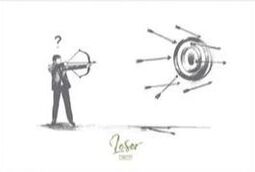 Failure can be the cause of many personal characteristics. In this sense it may involve a person's technique, sporting characteristics (e.g. strength and power levels), fatigue, dietary intake, limits, habits, and psychological issues (the competition, how much the lift or point matters, how much weight you are lifting). This could also involve slight attribution, but the environment surrounding a lifter can have an impact upon their likelihood to fail, this relating into psychological issues. For example, a lively competition environment could make a person fail if they are quiet, anxious or used to a quieter environment in training. However, this same environment could boost a person to perform and compete better due to added pressure felt psychologically. This partially links into one of my previous posts about Nature vs Nurture, this is linked below. Why is attribution used?Attribution is often used by Weightlifters (and athletes) to put off the thought of a mistake they have made until later when it can be processed. This is usually encouraged and supported verbally by coaches, family and friends (unless of course you are really blunt and you straight up tell the person that it was their fault and NOT in fact anything else that caused the mistake). This is important so listen up! ATTRIBUTION IS A GOOD THING TO REMOVE PSYCHOLOGICAL BARRIERS TO PERFORMANCE. Imagine this: A Weightlifter fails there first lift due to 'someone's phone going off the second they jerked the barbell' not because 'they lack the strength and power to jerk the weight on this particular day'. What does telling the Weightlifter that it was the distraction do? It enables them to complete the second and third attempt with a fresher mindset and a clearer conscience. As the blame is shifted and it is no longer seen (in their eyes) as their fault. If the lifter then is able to get these next two lifts correctly, then nothing is lost, the lifter did not give up! In training however, if a lifter is using attribution as a way to make up excuses not to train, then it is better for the lifter to accept it as failure and to overcome these mistakes by working harder. Although, it may well and truly be that the platform is uneven or the weights on the bar are not loaded equally. Have you actually experienced failure?Have you ever been in a situation where you have felt like a failure? like you've let your coach or your team down? you've even let yourself down. Did you go back and assess the situation to see how you could improve? It is often until you've followed these five steps, that you don't realise that your brain thinks you've failed because you haven't lived up to your expectations, but that you actually haven't failed and that there are some positives to your performance. For example, you may feel awful because you failed your last two lift attempts (personal best attempts) but your placed 1st, 2nd or 3rd. You may feel awful if you placed 3rd, but out of 10 whole people! In training, you may not gain a personal best, but you may be closer to it in strength than you were a month a go!
Personal experiences: Attribution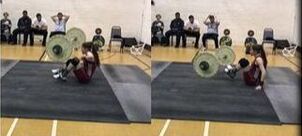 I must admit, I am a victim of attribution and failure. But mainly I have had many offences involving attribution. If you ask my coach (who initially told me what attribution was), he would say that when I've stopped shouting, screaming, crying and even swearing over a failure, that I'll then use attribution. The difference between myself using attribution a few years ago to now is that it would stop me from training, but now I laugh it off as a 'Haha I'm blaming the air temperature for my poor squat attempt'. For example, some of my recurring instances to blame attribution on have been: air temperature, clothing not fitting right, uneven platform, coach putting me off, noises, no noises, lighting too bright, lack of chalk, hair in face. Personal experiences: Failure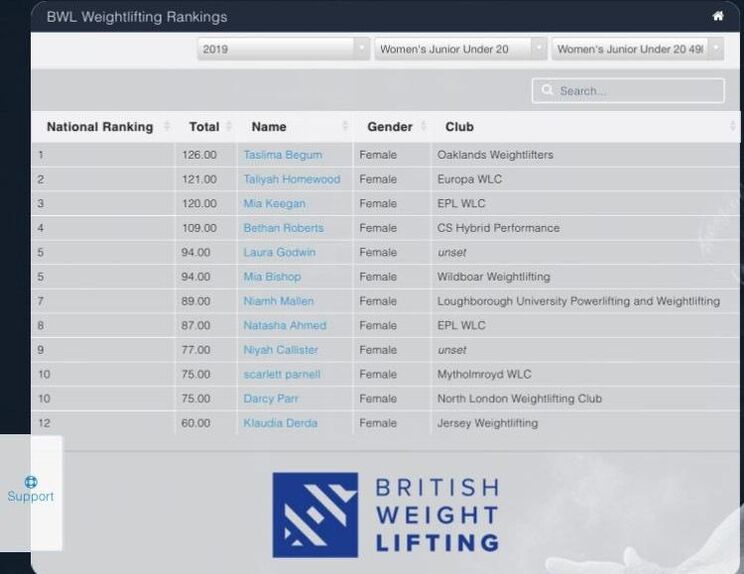 Now moving onto failures, I feel that it's good for me to assess these online, it feels like such a mental cleanse and shows that I don't have to be perceived as any sort of perfect standard Weightlifter. I always have dealt with many failures of personal best attempts and near maximal lifts within my training, but it was very rare until a few years ago that I'd fail a competition lift. More recently in my training, I would get so fatigued (don't worry, my program has now changed) that I couldn't jump to get under my Snatch. So then, I would either get underneath it and drop it, or only be able to pull it up to stomach height. In training, I'm not going to lie about this, but my world feels like it comes crashing down every time I fail. I completely go back to comparing myself to the standards I set for myself. Thankfully, it's not too often I compare myself to other lifters, since different factors (bodyweight, age, experience, genes, smarts) help me to deal with this mindset when it does creep back up on me. But I don't want to be an Olympian, so I'm just here having fun until I'm old and can't tie my shoelaces. My first failure in competition was only last year, I fell onto my knees. But I then jumped up more kilograms and gained a personal best. Before this, my only competition fail was when I was 12 and in the British and missed the call to my platform. Within the past year, I have gotten used to failing in a competition (not regularly, but when it happens I just shrug it off). A very cool Olympic Lifter once told me 'Sometimes it's good to fail and learn from your mistakes'. 5 years later, Nigel Richmond you were right! Although I did like keeping up my 9 year streak of no competition technical fails. In my most recent British competition, I failed my first ever Snatch (2nd lift) and my 2nd Clean and Jerk. But then I added more weight on and got the lift, because I'm pretty cool and I've got a habit of it now. It's asif failing reduces the psychological pressure of getting 6 out of 6 lifts. That same competition put me 3kg away from my personal best total, leaving me placing 9th out of 12th within the British rankings for my age and weight category (although some in the list are younger - not in the age category - and older than me). This still makes me feel great, considering this is a hobby of mine and is not a goal of mine to beat any form of British record at this moment in time. Thank you for reading this post, it has taken me more than just a few hours to write. More like 5 hours... But it's got to be one of my favourite posts that *cheesily* comes from the heart. I hope this has helped anyone out there who has felt like a failure at some point in their life.
Back to Blog
I was thinking for a bit what I wanted my next blog post to be about, and hundreds of concepts flew through my mind, but I eventually stuck to this one. Do people have the view that the only point in taking part in Sport and Physical Activity is to compete? Are people not trying sports they might be amazing at and gain personal benefits from just because they feel that they aren't good enough to compete or they'll look foolish being a beginner? I'm sure you've heard the saying 'Everyone starts from somewhere' and its true. Continue reading > My experienceI've been in the position even when I've been Weightlifting for years that I feel as if there is no point in competing if I'm not good enough. It came to a point where I hadn't competed for a year and a half due to comparing my skills to others of a higher level. Thankfully, I got over this mental stumbling block and have began to compete more. But there is much more to sport than competing. It's not always necessary to compete (in individual sports that is), training using a certain sport to develop a skill can be just as beneficial to provide you with personal competition between yourself. Even learning a new sport can help to develop skills in old ones! I have never competed within an Irish Dance Competition, but the skills I have developed from dance have helped me to excel within my Weightlifting. Such as better balance, flexibility and even managing my breathing. My coordination has also developed greatly through dance, helping me with other sports I have picked up in school. It is still enjoyable as a hobby without the need to compete. Why do we have this mindset and how can we fix it?My theory is: We have this mindset due to the pressure put on from the media and the UK education system. Okay maybe the education system isn't entirely to blame, but certainly from my experience you're either good at a sport and you are picked/forced to compete to represent your school or you are mediocre/awful and aren't forced to compete. The amount of times when I was developing my athletic skills and was nor amazing or awful, the amount of kids I would hear saying that they couldn't be bothered or didn't want to compete was crazy. Why? because its not fun anymore? because the pressure to win is too high? are they scared of losing? I always thought to myself how lucky they were that they had so many skills and didn't even want to compete. Just to clarify, I am sure there are many opportunities that schools provide in extracurricular clubs for beginners to try new sports, therefore not completely eliminating the idea of schools not encouraging participation outside of competitions. We can fix this mindset through encouraging the fun aspect of sport on our youth of today. Do you want to try a new sport that you could be great at? Good! Don't want to compete? No problem! That's how it should be. If pressure is ultimately forced onto youths to do well in sport in order to be great at competing, then you lower the chances of those that are quiet and only want to do sport for fun, trying at all. For instance, I've always wanted to try Pole Vault, Kayaking and Calisthenics and I have never had the opportunity to do so! Nothing is stopping me at all from doing these things, except my current time restrictions due to my dedication towards other sports. Maybe in the future I will give them a try! Personal benefits of trying a new sportThere are many personal benefits to trying a new sport: Physical/ Emotional: Physically healthier, mental and cognitive improvement, muscle tone improved, stronger heart, particular fitness components improved (E.g: Balance, flexibility, aerobic endurance, muscular endurance, strength, power, reaction time, agility, speed and body composition) Intellectual: Gain insight upon technique of the sport, gain knowledge in what your body can stand and can do, set targets to aim towards. Social: Make new friends, compete (if desired). Here is a link to bbc's site on lists of many sports you can become involved in, they also provide links of how to find your local club that hosts and coaches the sport. I hope you enjoyed reading this short post and I hope it inspired you to try a new sport.
Back to Blog
UKAD and Safeguarding course summary26/3/2019 Recently, I have completed two courses that will help me professionally in future and when currently coaching youth Weightlifters. In this blog post, I thought I would explain the benefits of the courses, summarize what the courses are about and how you can take these courses. These courses are particularly useful for anyone wanting to work with children or are involved in coaching any sport. Please carry on reading if you are interested. UKAD Accredited advisor courseI took this course online on the 28th of February and passed with 92%. This certificate lasts for 2 years and then requires renewal. This course is to essentially say that you as a coach or athlete will report any instances involving doping, will promote anti-doping and that you will advise athletes that they check the supplements and medication they take prior to competing. You can find the course online for free at the link I have provided. This course is affiliated with 1st4sport and it took myself approximately 6 hours over a period of 3 days to complete. This course highlighted over the ways you should report any signs of doping, the history of doping, how many months/ years/ permanent exclusion from the sport that athletes can gain, what coaches can be reported for, a coaches role and what TUE's and ADRV's are and much more useful guidance surrounding anti-doping. This course gave me the knowledge on how to report and guide athletes under my supervision about anti-doping. The benefits of this course would be that you are professionally developed, support anti-doping and that your athletes will experience fair competition environments. Child Protection courseI took this course on the 22nd of March at my local youth centre (where I coach) which was hosting the course. Again, this certificate lasts for 2 years before renewal. Since this course was ran by a member of the county council, I am unsure if the course costed anything. This course is to essentially address how you can protect and safeguard children and young people. The NSPCC are running courses that will be similar on their website, they are currently around £30. My course took 3 hours to complete, the ones upon the NSPCC website are said to take 3 hours also. This course featured information involving spotting signs of abuse, the different types of abuse and how to handle situations involving incidents and abuse (social services). This course allowed for free-thought regarding what is classed as abuse (E.g. the predicament of whether smacking your child is physical abuse). The course covered aspects from physical, psychological and sexual abuse, which was eye-opening and did contain sensitive topics (E.g. Female Genital Mutilation). This course gave me the knowledge on how I would report and deal with any concerns regarding witnessed or suspected abuse. The benefits of this course is that you are professionally developed and you know that any athletes or young people you are working with are able to be completely protected at uttermost best when under your care. Thank you for reading this blog post, I didn't want to make it very long as taking the courses will provide the most knowledge and I would hate for this post to be used instead of someone taking the appropriate course required.
Back to Blog
On the 2nd of February, I competed within my first North West Powerlifting competition. I am very familiar with the environment surrounding Olympic Weightlifting competitions, therefore making this environment a little unfamiliar. I have been using Powerlifting (squat, bench press and deadlift) within my Olympic Weightlifting training for approximately 4 years now, which has improved my Olympic lifting. Recently, my poundages began to increase more frequently in my Powerlifting than in my Olympic lifting, so I figured I would give a Powerlifting competition a try. Read more about my experience below. The environment and setup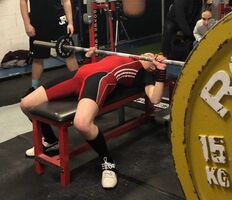 Bench press Bench press In order to be able to compete, I registered with British Powerlifting and North West Powerlifting and therefore kept track of their competitions on their website and Facebook page. Just like within Olympic Weightlifting, I had an idea of my opening weights prior to the competition. I arrived on the day, competing within the unequipped U18 Sub-Junior -47kg category and just made it into the category by 0.1kg (meaning I may be in the -52kg category next time I compete). Within Olympic Weightlifting, the bodyweight categories are different to those within Powerlifting. When I weighed in, I gave in my poundages as starting on 50kg Squat, 30kg Bench, 87.5kg Deadlift. Unlike Olympic Weightlifting, powerlifting competitions have a total of 9 attempts altogether, there are only 6 attempts within Olympic Weightlifting (although both of the sports contain three attempts per lift). Before the competition begins, you will be measured for your rack heights for your squat and for your bench. This number will be written down and altered for each of your attempts, you can alter this if too high or too low. I seem to recall mine were either squat height 6 and bench height 8, might have been the other way around. This was a completely different experience for me, as within Weightlifting you don't use racks so height measurements aren't needed to be measured. Before I turned up on the day, I checked to see which equipment could be used, as although it was only a divisional competition, the rules sometimes still apply to the standards of the International Powerlifting Federation (IPF). This meaning, specific logos could not be worn unless approved and some materials or specific equipment could not be worn. I also made myself familiar with the powerlifting commands, which I will mention within the next few paragraphs. During the competition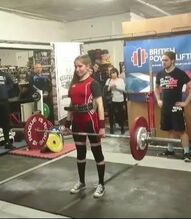 Deadlift Deadlift A Powerlifting competition has a different structure to an Olympic Weightlifting competition. An Olympic Weightlifting competition is ran in order of how much is being lifted. For example, Lifter A is lifting 45kg, Lifter B then lifts 46kg, and Lifter A then complete their second attempt of 47kg (this providing there are not more attempts in between). Within Powerlifting, everyone within the flight path will complete their first attempt, then the bar is reloaded for Lifter A's second attempt and then everyone completes their second attempt until it's time for Lifter A's third attempt. This was strange to get used to during the competition, as often I would expect to be back on the platform immediately again, but actually I would have a good 20 min rest. In Powerlifting, you can increase with 2.5kg, however in Weightlifting you can increase by anything more than a kilogram and in some circumstances (age or failure) stick at the same weight. Usually, within a Weightlifting competition, Group A would complete their Snatches and their Clean + Jerks and then they would be given awards and sent away. However, after I had finished all three of my squats in my flight path (group), then the next flight path would complete their squats and then the next. Then my flight path would begin the bench press and so on. I much preferred this layout, it made it more relaxing to watch the other groups and made it fairer so that the other groups that were later on actually received an audience, rather than everyone who'd already competed had already gone home. 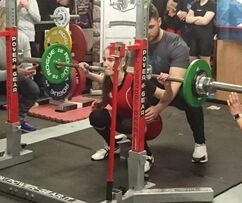 During the competition, it was useful to see the number of spotters upon the platform that would essentially ensure the bar couldn't fall on the lifter in the event of a fail. The bar could be passed to you in the bench and maybe one spotter was on the platform for the deadlift. The system for loading was very efficient and I believe it would make Olympic Weightlifting competitions run more smoothly and quickly. A computer program was used to indicate the colour and order of the weights that were required on the bar, this would then be called out for the loaders to load on. Overall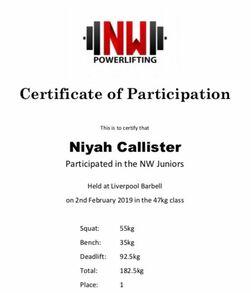 Here is a summary of how the competition went: Squat: 50kg, 52.5kg, 55kg Bench: 30kg, 32.5kg, 35kg Deadlift: 87.5kg, 90kg, 92.5kg Total: 182.5kg I received all white lights for every lift, achieved a personal best deadlift of 92.5kg and beat three North West records in the U18 category (Bench, Deadlift and total) and then two records in the U23 category (Deadlift and Total). I also placed first within my category (nobody was in my category). I will now explain what is meant by the judging system, results and the commands for the lifts. 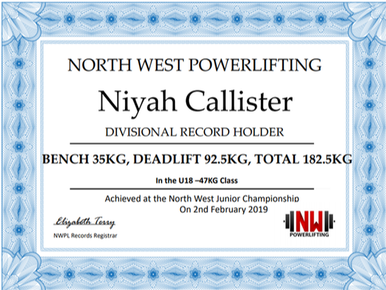 I was told prior to one of my squat attempts that there must be a gap between my knee sleeves and socks (and also the legs of the singlet). Before the competition began, I checked that I could wear my Olympic Weightlifting singlet as although Adidas is not approved, it was only a divisional competition. I learnt that I can only wear neoprene knee sleeves (and thankfully I had bought my neoprene ones with me as well as my cotton ones). I learnt I wasn't allowed a Velcro belt so I ordered one and picked it up from the post office THE MORNING OF the competition. Very stressful, but it did the job for a £60 breaking-my-bank belt. There are still other reasons why equipment cannot be used, for example, not wrapping anything around the bar and not using the thumb-loop on your wrist wraps (which I was gently warned about prior to being on the platform). The white lights mean that the lift was good. Just like in Weightlifting, three red lights mean it was a no lift, whilst only one red light is still acceptable. You can gain three reds for not obeying commands or keeping up to the technique standards. I will briefly explain some of the reasons you can fail a lift, this being very strict and different to Weightlifting. I have linked the IPF rules on the commands, which can be found on page 9 and 10 of the attachment. Squat
The result of the competition can either go based upon wilks (a coefficient taking into account of bodyweight and gender), age-adjusted wilks (age is taken into account), total (total amount lifted, highest three lifts added together) or ipf points (a newer equivalent to wilks). Currently I am at: Wilks: 252.91 Ipf points: 358.77 Total: 189.5kg Olympic Weightlifting usually uses your total or a Sinclair coefficient. Thank you for reading this blog post. Whether you are an Olympic Weightlifter, Powerlifter or none at all, I hope this post has shed some light upon a competition environment within the sport. Overall, I had an amazing day and met some great people as everyone was so kind and welcoming; I look forward to my next competition later on in the year.
Back to Blog
I was so desperate to write this around the time I actually completed the course and I never got around to it! I wrote some notes down around the time upon my opinion and experience when completing the course. This course takes place over two days of practical work and features some work that must be revised over and completed upon British Weightlifting's online learning platform prior to the course. Once this course has been completed, you are given the title 'Assistant Weightlifting Coach', which allows you to assist a qualified Level 2 coach and to coach under the provision of a Level 2 coach. I completed my course on the 26th and 27th of January as Crossfit Leyland (North of England), the course began at 9am each day and finished at approximately 5pm. Currently, the course costs £350, but if you are a British Weightlifting member, you can receive £50 off the course. Here is the link to British Weightlifting's information regarding all of the courses they offer. I suggest you carry on reading if you are considering taking this course. My preparation and experienceAlthough I am only 17 years old, I have been unofficially coaching Weightlifting under the supervision of a Level 2 coach for approximately 5 years. This has allowed me to create my own training sessions and deliver them to young Weightlifters. Usually, it is the qualification that would allow you to do this, however since my club has fluctuated in its number of members over the years, I have been given the opportunity to slowly build up my confidence from coaching small skills to then completely analyzing and correcting technique upon the spot. I believe by doing this, due to my age, I was very prepared for the course. However, I believe that as long as you know the basics of Weightlifting (the technique, what not to do, failures and the two lifts) and have the intuition to coach and recognize where mistakes could be made, then you are prepared and able to take this course. You will be given access to British Weightlifting's Online Learning platform, which will provide you with information to revise over that will educate you upon any other knowledge you do not know about the sport, that is required for the course. Online Learning: ReviewI personally felt, from my perspective when completing the online learning section for the course that it provided me with details that were featured upon the course. The content was easy to pass through and provided interest through videos and colourful diagrams. This meant, the information was easy to recall when questions were asked on the online learning platform and during the practical sessions of the course. Therefore, the information introduced me clearly to the course and helped me to have a basis of what the course would require of me upon the practical days. I recommend making notes from the online learning material, not everything is necessary if you know how to perform the Olympic lifts, but the structure of the example sessions and safety precautions I found were beneficial to make notes upon. The only point I would like to put across, is that the information online should be double checked over. Some simple grammar issues have been made and uncorrected, this made some information difficult to understand. As a 17 year old with no issues with English nor learning difficulties, this wasn't such an issue for myself as I had the knowledge to understand what was actually meant by the incorrectly phrases sentences. However, take for example someone with severe Dyslexia, learning difficulties or those who aren't excellent at English, they may struggle to understand some confusingly worded content. Contact with the InstructorOnline and Offline The instructor introduced herself on the online learning platform before we met up for the two practical days and provided us with her contact details if we had any questions. This was very useful, in case content upon the course wasn't understood or working. During the two practical days, I asked about many topics about the course, ensuring that I knew what was required when I was to lead a practical session. The instructor was very clear and friendly when answering my questions, which really helped me to settle in and feel less nervous (as I was the youngest there). Her guidance was very beneficial, from the start to the end of the practical days. Summary of the course: Day 1Introduction When I first arrived there was a brief introduction to the facilities and everyone on the course introduced themselves. Explanation We received booklets upon the Weightlifting technique and were refreshed over the technique. We were asked to spontaneously come up with warm up activities, which later progressed into teaching a movement to the group throughout the day. This allowed for the sharing of knowledge and promoted creativity, which I really enjoyed. Preparation We were told that on the second day, we would have to lead a group session and were able to think about what we may coach and how to construct a training session suitable for a targeted age group/ level. Material The online learning material was highlighted and some knowledge I already knew was mentioned, however there were parts of information which I had never learnt before. For example: Different ways to configure your Snatch grip. Summary of the course: Day 2Practice Before I lead my session, we had the opportunity to practice what we were going to demonstrate in our session with guidance from our session plans we had written. Leading the session I lead the session without the usage of my session plan and naturally began to coach how I would at my club. The instructor would ask to see parts of each section of the session to save time and to get through everyone's session plan. I targeted my session towards young people who were intermediate Weightlifters. I structured the session plan with a warm up, main session and cool down. Each section featuring activities aimed towards young people, making the session fun and enjoyable. The written session plan and practical deliverance of the session were both graded and counted towards my final grade. Evaluation After all the sessions had been completed, we all received feedback as to what was good and could improve. I was told that:
How did the course benefit me?Once leaving the venue, I felt more independent, confident (after partaking in a course with some Masters of Science Students), creative and ready to improve my coaching. When I went back to my club, I conducted my same training session. Over the past few weeks, I have used many of the fun games that the others incorporated into their sessions, which the young lifters enjoyed and gave me excellent feedback on! I feel more confident in my ability to coach, as the qualification backs up my experience and proves that even for age, I have the ability to be a good coach even though sometimes people underestimate me. The price of the course can often discourage people from completion, but hands down, it was worth it. I enjoyed both days, the content was interesting and I definitely feel that I have improved qualities within my coaching since then. Thank you for reading this post, I'll be sure to write another upon my Level 2 Certification and may compare the two courses.
Back to Blog
I'm currently studying Alevel psychology and a recent debate we have been looking at is the idea that we are who we are due to nature or nurture. Nature meaning that we are us due to our genetic makeup that is inherited from our parents, nurture meaning that we are us due to the environmental conditions surrounding us. We were asked to write about any scenario surrounding the idea that our behavior is inflicted due to nature vs nurture, hence why I've developed the idea to yet again turn my written school work into a blog post. The following passage you will read is merely based upon theory and no physical evidence of any experiment, this is simply something different that I thought would look nice upon my site, it may not prove to be at all accurate. I hope you enjoy! The initial scenarioPicture this scenario, you have trained with a coach for a sporting competition and prior to the competition , you feel incredibly motivated and have an idea of where you would like to place. After losing in the competition, the adrenaline rush prior to the competition and afterwards causes you to experience feelings of anger. Lets consider the factors of nature vs nurture and whether they correlate with these angry feelings. Nature debateIn this setting, the idea of nature may come into consideration when looking over the genetics of athletes with more or less aggression physically and emotionally present. This can be configured through measuring the aggression levels of the parents of the athletes who show more feelings of anger to motivate themselves prior to competing and after if they experience anger if they lose a competition. These aggression levels could be measured through giving tasks to the parents that involve high amounts of adrenaline being produced and then deliberately introducing the fixed result of the parents losing. This can be compared to see whether the athletes are likely to have inherited more anger issues due to their genetics. Then when given the opportunity to, will these aggressive feelings be revealed in times when adrenaline is boosted. Nature debate: limitationsSome limitations of the nature debate being fully supportive are:
Nurture debateThe idea of nurture may arise within conditions surrounding sports competitions and the overall environment, due to the situation inflicting the behavior shown. A general sports competition will be likely to contain a reasonably sized audience to competitors ratio, some which will be in support of the athlete, others not so supportive. Other factors such as the participants feelings surrounding the other competitors and the audience come into play, which can depend upon nurture. The levels of adrenaline and aggression present in the athlete can depend upon how much the athlete is able to boost themselves up before competing, do they make themselves angry to perform better? How much do they want to succeed? Then, depending upon environment factors (Where they placed, the effort they put in and the excitement of others who won), after such a large adrenaline rush, does nurture prove that the anger shown when losing is simply due to what happens there and then? The training environment surrounding the athletes prior to the competition may inflict the uproar of anger experienced when losing a competition. For example, are their training sessions loud and are pushy coaches and parents claiming that the athlete 'will beat everyone they're against', is there pressure present to win for the sake of the club and not for personal benefits? Nurture debate: limitationsSome limitations of the nurture debate being fully supportive are:
What would society choose?Society may not side with neither nature or nurture as they may have impacts upon each other in order to provoke the initial behavior change when faced with a result of loss. For example, training sessions may promote the athlete to be loud and angry when training gets tough, but without any genetics that show their parents had issues with abrupt anger and the controlling of this, what does this intend to prove? My personal experienceMy personal experience with aggression and sport within Olympic Weightlifting is that prior to an attempt at a personal best, I often boost myself up and try to make myself angry before attempting the lift. If I succeed at the lift, my response is something like 'Great, now volume'. If I fail the lift, there is a good chance you don't want to be the cause for my failure as sometimes (especially after multiple attempts) I can become really angry with myself for not successfully getting the lift or even if my technique is looking awful. Here are some factors about me:
So without my opinion, what do you think? Nature, nurture or both? Thank you for reading this post, it has been enlightening to write a post that is fresh and that can be built upon.
|